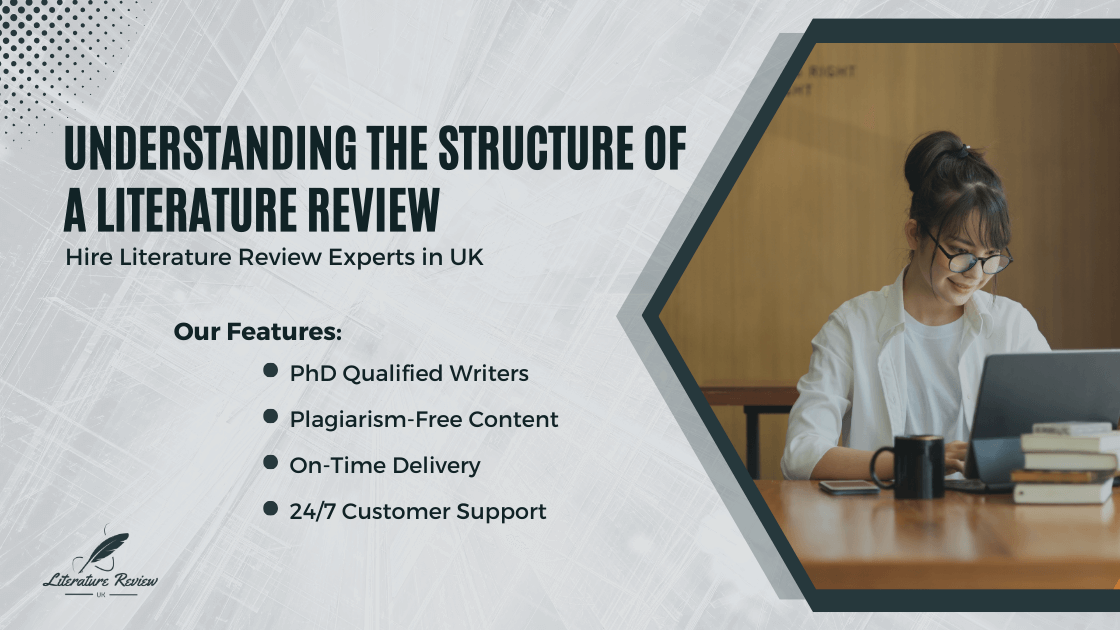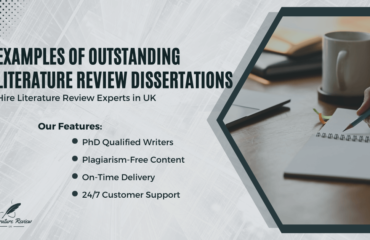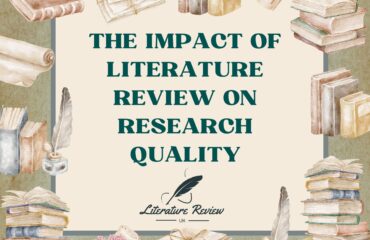
Are you struggling to understand the structure of a literature review? Fret not! In this article, we will break down the components of a literature review and provide you with a road map to master this essential academic skill.
A literature review is a critical analysis of published literature on a specific topic. It serves as a foundation for understanding the current state of knowledge in a particular field and identifying gaps that warrant further research. The structure of a literature review typically includes an introduction, body paragraphs that present and evaluate the relevant literature, and a conclusion that summarizes the key findings.
By understanding the structure of a literature review, you will be able to create a well-organized and cohesive piece of academic writing that showcases your expertise in the subject matter. Furthermore, mastering this skill can greatly enhance your ability to critically analyze research, synthesize information, and contribute to the existing body of knowledge.
Whether you are a student embarking on a research project or a researcher seeking to publish a review paper, this article will provide you with invaluable insights into the art of constructing a literature review. So, let’s dive in and unlock the secrets of this essential academic genre.
Purpose and significance of a literature review
A literature review serves several purposes in academic writing. Firstly, it provides a comprehensive overview of existing research and knowledge on a particular topic. This helps establish the context and relevance of your own research or study. By reviewing the existing literature, you can identify gaps, controversies, and areas where further research is needed.
Secondly, a literature review allows you to critically analyze and evaluate the quality and credibility of the sources you are using. This is crucial in ensuring that your work is based on reliable and current information. Additionally, a literature review helps you identify different viewpoints and arguments within the field, enabling you to position your own research within the broader scholarly conversation.
Lastly, a well-written literature review demonstrates your understanding of the subject matter and your ability to synthesize information from various sources. It showcases your analytical skills and your ability to draw connections between different studies and theories. This is particularly important if you are writing a review paper or thesis, as it establishes your credibility and expertise in the field.
The structure of a literature review
A literature review typically follows a specific structure to ensure clarity and coherence. While there may be some variations depending on the discipline and purpose of the review, the following components are commonly included:
- Introduction: The introduction sets the stage for your literature review by providing an overview of the topic and explaining its significance. It should clearly state the research question or objective of the review and establish the scope and boundaries of the study.
- Body paragraphs: The body paragraphs form the main body of the literature review and are where you present and analyze the relevant literature. Each paragraph should focus on a specific theme or aspect of the topic and should include a clear topic sentence that introduces the main point of the paragraph. Within each paragraph, you should summarize and critically evaluate the key findings, methodologies, and arguments of the selected sources.
- Conclusion: The conclusion summarizes the key findings and insights from the literature review. It should address the research question or objective stated in the introduction and highlight the main contributions and implications of the reviewed literature. Additionally, the conclusion may suggest areas for further research or discuss any limitations or gaps in the existing literature.
Step-by-step guide to writing a literature review
Writing a literature review can be a daunting task, especially for beginners. However, with a systematic approach, you can break it down into manageable steps. Here is a step-by-step guide to help you through the process:
- Identifying and selecting relevant sources: Start by conducting a comprehensive search of relevant literature using academic databases, libraries, and online resources. Use specific keywords and filters to narrow down your search. Evaluate the credibility and relevance of each source before including it in your review.
- Evaluating and analyzing the literature: Once you have gathered your sources, carefully read and analyze each one. Take notes on the main arguments, methodologies, and findings of each study. Identify common themes, controversies, or gaps in the literature. Critically evaluate the strengths and limitations of each source and consider their overall contribution to the field.
- Organizing and synthesizing information: Organize your sources based on themes, methodologies, or any other relevant criteria. Create an outline or concept map to help you visualize the structure of your literature review. Synthesize the information from different sources by identifying patterns, connections, and contradictions. Group similar findings or arguments together to create a coherent narrative.
- Writing the literature review: Start by writing a clear and concise introduction that provides an overview of the topic and states the research question or objective. In the body paragraphs, present and analyze the relevant literature in a logical and systematic manner. Use clear and concise language, and support your arguments with evidence from the literature. Finally, write a well-structured conclusion that summarizes the key findings and highlights the significance of the reviewed literature.
Identifying and selecting relevant sources
While writing a literature review, it is important to be aware of common mistakes that can undermine the quality and effectiveness of your work. Here are some pitfalls to avoid:
- Lack of focus: Ensure that your literature review has a clear focus and addresses a specific research question or objective. Avoid including irrelevant or outdated sources that do not contribute to the overall purpose of the review.
- Lack of critical analysis: A literature review is not simply a summary of existing studies. It requires critical analysis and evaluation of the strengths, weaknesses, and limitations of the reviewed literature. Avoid presenting a one-sided or biased view and strive for objectivity and balance in your analysis.
- Poor organization and structure: Make sure your literature review has a clear and logical structure. Use headings, subheadings, and transitions to guide the reader and create a coherent narrative. Avoid jumping between different topics or sources without proper organization.
- Inadequate synthesis and integration: A literature review should go beyond summarizing individual studies. It should synthesize and integrate information from different sources to create new insights and perspectives. Avoid presenting a disjointed collection of summaries and strive for a cohesive and integrated analysis.
- Plagiarism and lack of citation: Always give credit to the original authors by properly citing and referencing their work. Plagiarism is a serious academic offense and can have severe consequences. Use appropriate citation styles and follow the guidelines of your institution or publisher.
Evaluating and analyzing the literature
Mastering the art of constructing a literature review is essential for any student or researcher. By understanding the purpose and structure of a literature review, you can create a well-organized and comprehensive piece of academic writing that contributes to the existing body of knowledge. Remember to follow a systematic approach, critically analyze the literature, and avoid common mistakes. With practice and persistence, you will become proficient in this essential academic genre. So, start exploring the vast world of literature and unlock the secrets of the literature review!
Organizing and synthesizing information
The first step in constructing a literature review is to evaluate and analyze the existing literature. This involves identifying relevant sources, such as academic journals, books, and reputable websites, that provide valuable insights into the topic of interest. It is important to critically assess the quality and credibility of these sources to ensure that the information presented is reliable and trustworthy.
Once you have gathered a range of literature, it is crucial to analyze and synthesize the information. This involves identifying key themes, trends, and debates within the literature and organizing them in a logical and coherent manner. By critically evaluating the literature, you can identify the strengths and weaknesses of previous research and highlight any gaps that need to be addressed in your own study.
It is also important to consider the theoretical frameworks and methodologies used in the literature. Understanding these aspects will enable you to evaluate the validity and applicability of previous research to your own study. By critically analyzing and synthesizing the literature, you can develop a comprehensive understanding of the topic and lay the foundation for your own research.
Writing the literature review
Once you have evaluated and analyzed the literature, the next step is to organize and synthesize the information. This involves categorizing the literature based on key themes, concepts, or methodologies. By organizing the literature in this way, you can identify commonalities and differences, leading to a more coherent and structured review.
One effective way to organize the literature is by creating a matrix or table that summarizes the key findings from each source. This allows you to compare and contrast the different perspectives, methodologies, and results presented in the literature. By synthesizing the information in this way, you can identify patterns and gaps that will inform your own research.
In addition to organizing the literature, it is important to provide a clear and concise summary of each source. This involves briefly summarizing the main arguments, methodologies, and findings of each study, highlighting their relevance to your own research. By providing a succinct summary of each source, you can demonstrate your understanding of the literature and make it easier for readers to navigate through your review.
Common mistakes to avoid in literature reviews
Once you have organized and synthesized the information, it is time to write the literature review. The key to writing an effective literature review is to maintain a clear and logical structure throughout the entire piece. This involves introducing the topic, presenting and evaluating the relevant literature, and concluding with a summary of the key findings.
In the introduction, you should provide a brief overview of the topic and explain why it is important to review the literature in this area. This sets the context for your review and helps readers understand the significance of your research. The introduction should also include a clear thesis statement that outlines the main objectives and scope of your literature review.
The body paragraphs of the literature review should present and evaluate the relevant literature in a systematic and organized manner. Each paragraph should focus on a specific theme or concept and include a synthesis of the key findings from the literature. It is important to critically analyze and evaluate the strengths and weaknesses of each source, highlighting any gaps or areas for further research.
In the conclusion of the literature review, you should summarize the key findings and main arguments presented in the body paragraphs. This is an opportunity to highlight the contributions of your review and identify any future directions for research. The conclusion should also restate the thesis statement and provide a sense of closure to the literature review.
Conclusion
While constructing a literature review, there are several common mistakes that should be avoided. One common mistake is simply summarizing the literature without critically analyzing or evaluating it. A literature review should go beyond a mere summary of sources and provide a critical analysis of the strengths, weaknesses, and gaps in the existing literature.
Another mistake is failing to properly cite and reference the sources used in the literature review. It is important to accurately cite all sources and provide a comprehensive reference list to ensure that your review is academically rigorous and credible. Plagiarism is a serious offense in academic writing, so it is essential to properly attribute all ideas and information to their original sources.
Furthermore, it is important to maintain a clear and coherent writing style throughout the literature review. Avoid using excessive jargon or technical language that may alienate readers. Instead, strive for clarity and conciseness, ensuring that your ideas are presented in a logical and accessible manner.




